Caryn’s Thoughts

 My niece, Toni Chase has had a wonderful year with her family. She and her husband, Dave went to Florida in May. By going early in the summer, they dodged the major tourist season, and were able to enjoy a nice, peaceful getaway. It’s probably good that they had that quiet getaway, because when they got back to Casper, they were very busy helping with her son, James Renville and his wife, Manuela’s wedding…which was beautiful, by the way.
My niece, Toni Chase has had a wonderful year with her family. She and her husband, Dave went to Florida in May. By going early in the summer, they dodged the major tourist season, and were able to enjoy a nice, peaceful getaway. It’s probably good that they had that quiet getaway, because when they got back to Casper, they were very busy helping with her son, James Renville and his wife, Manuela’s wedding…which was beautiful, by the way.
Toni’s life has taken a wonderful turn, with the addition of her beautiful daughter-in-law, and watching her son be so 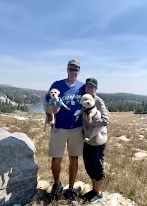
 very happy. James and Manuela are happy, and for a mom, there is nothing better than knowing that. James and Manuela are beginning their new life together, but they still find time to spend with the family. Whenever they are around, the family dogs, Cricket and Biscuit are on cloud nine. In fact, Cricket loves playing “third wheel” with the kids. It’s like they are triplets, and Cricket thinks the kids are the greatest thing since sliced bread.
very happy. James and Manuela are happy, and for a mom, there is nothing better than knowing that. James and Manuela are beginning their new life together, but they still find time to spend with the family. Whenever they are around, the family dogs, Cricket and Biscuit are on cloud nine. In fact, Cricket loves playing “third wheel” with the kids. It’s like they are triplets, and Cricket thinks the kids are the greatest thing since sliced bread.
Planning a wedding is a lot of work. Having planned two myself…plus my own, I know. The parents need a vacation as much as the happy couple does. After the wedding, Toni and Dave took a trip to Colorado for a 
 concert at Red Rocks. They also went to Aspen at the beginning of fall. Toni and Dave love to travel and spend quality time together. They have such a great marriage, and it’s so sweet to see them together. They lead quiet peaceful lives, hiking, traveling, working, and enjoying their family. Life just doesn’t get any better than that. Today is Toni’s birthday. Happy birthday Toni!! Have a great day!! We love you!!
concert at Red Rocks. They also went to Aspen at the beginning of fall. Toni and Dave love to travel and spend quality time together. They have such a great marriage, and it’s so sweet to see them together. They lead quiet peaceful lives, hiking, traveling, working, and enjoying their family. Life just doesn’t get any better than that. Today is Toni’s birthday. Happy birthday Toni!! Have a great day!! We love you!!

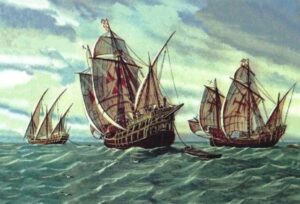 Hallucinations are not an uncommon phenomenon after long periods of time at sea, but on January 9, 1493, explorer Christopher Columbus, sailing near the Dominican Republic, saw something in the water that was not a hallucination, rather just something he had never seen before. Columbus knew the sea. He was a sailor, but this was not something he had seen before, and he had no knowledge of such a creature to draw from.
Hallucinations are not an uncommon phenomenon after long periods of time at sea, but on January 9, 1493, explorer Christopher Columbus, sailing near the Dominican Republic, saw something in the water that was not a hallucination, rather just something he had never seen before. Columbus knew the sea. He was a sailor, but this was not something he had seen before, and he had no knowledge of such a creature to draw from.
Well, it seems like if we don’t have any idea of what something is, we tend to draw from fiction. That was what Colombus did when he mistakenly thought these creatures in the water were three mermaids. Well, of course, they weren’t mermaids, but manatees. Columbus was so sure of what he saw that he even described them in his journals as “not half as beautiful as they are painted.” Well, if you have seen a manatee, you will agree that they really aren’t what we would call “beautiful.”
Columbus had been at sea for six months, setting sail from Spain, heading across the Atlantic Ocean with the Nina, Pinta and Santa Maria, hoping to find a western trade route to Asia. Of course, we now know that his voyage, the first of four he would make, led him to the Americas, or “New World.” Maybe, it was his long months at sea that caused him to imagine mermaids. Or maybe seeing only water for so long and so far, made the manatees look different to him than they really did, although, he did not imagine them to be beautiful.
Mermaids are, of course, mythical half-female, half-fish creatures, that have graced the imaginations of seafaring cultures since the time of the ancient Greeks. “Typically depicted as having a woman’s head and torso, a fishtail instead of legs and holding a mirror and comb, mermaids live in the ocean and, according to some legends, can take on a human shape and marry mortal men. Mermaids are closely linked to sirens, another folkloric figure, part-woman, part-bird, who live on islands and sing seductive songs to lure sailors to their deaths.”
Those Mermaid sightings by sailors were most likely manatees, dugongs, or Steller’s sea cows…which became extinct by the 1760s due to over-hunting. Manatees are slow-moving aquatic mammals with human-like eyes, bulbous faces and paddle-like tails. There are three different species of manatee…West Indian, West African and Amazonian, and one species of dugong which belong to the Sirenia order. As adults, Manatee are typically 
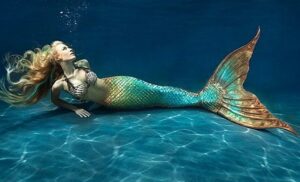 10 to 12 feet long and weigh 800 to 1,200 pounds…not exactly the sleek lines most people would associate with the feminine beauty of the mermaid. Manatees are plant-eaters, have a slow metabolism, and can only survive in warm water. Manatees live an average of 50 to 60 years in the wild and have no natural predators. However, they are an endangered species. In the United States, the majority of manatees are found in Florida, where scores of them die or are injured each year due to collisions with boats.
10 to 12 feet long and weigh 800 to 1,200 pounds…not exactly the sleek lines most people would associate with the feminine beauty of the mermaid. Manatees are plant-eaters, have a slow metabolism, and can only survive in warm water. Manatees live an average of 50 to 60 years in the wild and have no natural predators. However, they are an endangered species. In the United States, the majority of manatees are found in Florida, where scores of them die or are injured each year due to collisions with boats.
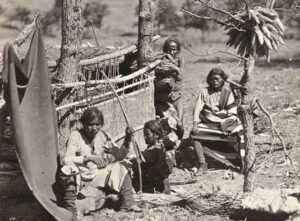
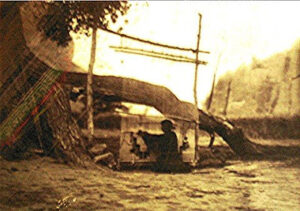 When the White Man came to this country, little was known about how the Indians lived or the things they used to make their lives easier. These days, we have learned much about all that. Things like killing the buffalo and using pretty much every part of the animal for things like food, clothing, weapons, and probably much more. They were also artists, to a degree that we can only imagine. They drew things and made things…from next to nothing…and as we know now, they were very good artists, especially with weaving. Once the Indians found out how much the white colonists liked their weaving, they began to make blankets and rugs to trade for other goods. Before then, the weaving was only used to make clothing for the tribe.
When the White Man came to this country, little was known about how the Indians lived or the things they used to make their lives easier. These days, we have learned much about all that. Things like killing the buffalo and using pretty much every part of the animal for things like food, clothing, weapons, and probably much more. They were also artists, to a degree that we can only imagine. They drew things and made things…from next to nothing…and as we know now, they were very good artists, especially with weaving. Once the Indians found out how much the white colonists liked their weaving, they began to make blankets and rugs to trade for other goods. Before then, the weaving was only used to make clothing for the tribe.
The Navajo people learned the how to build looms and weave fabrics from the Hopi Indians. This new “business venture” brought about a sedentary life as they spent long hours sitting and weaving. They soon learned to make beautiful blankets with geometric shapes, diamonds, and zig-zag patterns. Navajo rugs and blankets are almost exclusively produced by Navajo people of the Four Corners area of the United States. They have been highly sought after, for their beautiful craftsmanship for over 150 years.
The weavings of the Navajo people soon became a commercial production in the Four Corners area. I have 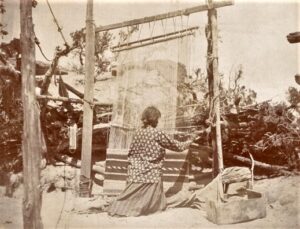
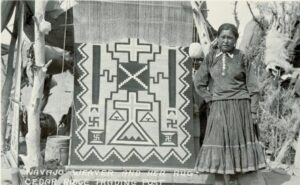 been there and seen them myself. It was very interesting. These days, it is all a part of the tourism industries. As one expert expresses it, “Classic Navajo serapes at their finest equal the delicacy and sophistication of any pre-mechanical loom-woven textile in the world.” Some old-world crafts really can’t be improved upon by using modern-day equipment. The old ways are simply the best ways, sometimes.
been there and seen them myself. It was very interesting. These days, it is all a part of the tourism industries. As one expert expresses it, “Classic Navajo serapes at their finest equal the delicacy and sophistication of any pre-mechanical loom-woven textile in the world.” Some old-world crafts really can’t be improved upon by using modern-day equipment. The old ways are simply the best ways, sometimes.
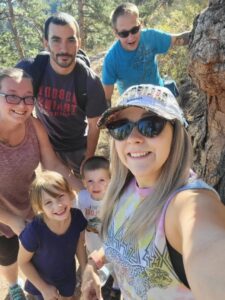
 My grandniece, Siara Olsen, has been through a year of changes, but now she is one year out, from some of the hardest things that have ever happened her…or to anyone, and her incredible strength is very much evident in who she has become. After losing her son, Alec on January 25, 2020, when he was just 3 months. Her marriage fell apart soon after, and life looked very bleak, but Siara is such an amazingly strong woman, and she wouldn’t give up. She knew that her son and all of her family, who love her very much would want her to keep going, so keep going she did.
My grandniece, Siara Olsen, has been through a year of changes, but now she is one year out, from some of the hardest things that have ever happened her…or to anyone, and her incredible strength is very much evident in who she has become. After losing her son, Alec on January 25, 2020, when he was just 3 months. Her marriage fell apart soon after, and life looked very bleak, but Siara is such an amazingly strong woman, and she wouldn’t give up. She knew that her son and all of her family, who love her very much would want her to keep going, so keep going she did.
The year that followed was a year of firsts. She met her boyfriend, Chris Kirk just over a year ago, and he has a birthday bond with her sweet Alec. About a year ago Siara got her own apartment, and she has been making it her own and is loving every minute of it. Siara has been at Platte Valley Bank for a while now, but she was given her own office about a year ago, and she really likes her new job and office. While the year began harsh for her, it ended with healing. Siara is a strong, independent, and faith-filled woman, and she makes her mom and the rest of the family very proud!! No matter what Siara is hit with, she picks herself up and moves forward every time. Her mom, Chantel Balcerzak says, “Well, I can’t even describe how proud that makes me!”
Siara is a strong woman of faith, and right after high school, she got a tattoo of her favorite scripture, “I can do 
 all things through Christ who strengthens me,” Philippians 4:13. That scripture have seen her through any and all bad times she has seen, because she not only believes this…she moves in it! She is truly inspirational!!
all things through Christ who strengthens me,” Philippians 4:13. That scripture have seen her through any and all bad times she has seen, because she not only believes this…she moves in it! She is truly inspirational!!
Siara and Chantel have been working out together at lunch to get in shape. Siara’s niece, Chantel’s granddaughter, Izabella Siara Harmon (named after her aunt) often joins them, and she loves the girl-time comradery…and the exercise doesn’t hurt anything either. The three of them are growing stronger every day and feeling great. It has been a hard year, but Siara is a strong woman, and I know that she will have victory in the coming year. Today is Siara’s birthday. Happy birthday Siara!! Have a great day!! We love you!!

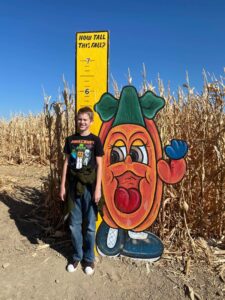 It’s always so interesting to watch a child grow up and begin to show the direction their heart is going to take them in life. Some kids take longer than others, trying to decide just what it is that holds their interest, but some, like my grandnephew, Ethan Hadlock, have a pretty good idea of what they want to do in life, at a very young age. Ethan has long been interested in becoming a gaming programmer, and as most of us know, that could become a very lucrative career. Most occupations that involve computers and programming are good career moves, but gaming is pretty much in a class by itself, because people love to be entertained and video games are one of the best ways to be entertained. If you have a mind for programming, you have the potential to go far in the tech industry.
It’s always so interesting to watch a child grow up and begin to show the direction their heart is going to take them in life. Some kids take longer than others, trying to decide just what it is that holds their interest, but some, like my grandnephew, Ethan Hadlock, have a pretty good idea of what they want to do in life, at a very young age. Ethan has long been interested in becoming a gaming programmer, and as most of us know, that could become a very lucrative career. Most occupations that involve computers and programming are good career moves, but gaming is pretty much in a class by itself, because people love to be entertained and video games are one of the best ways to be entertained. If you have a mind for programming, you have the potential to go far in the tech industry.
While Ethan is great at programming games, he nevertheless, has a number of other interests. Ethan likes gardening, which is somewhat unusual for someone his age, but he has family members who love gardening too, so he has had some practice over the years. I think it’s his tendency an artistic person that makes him a good gardener. Gardening isn’t just about sticking a few plants in the dirt…I can do that, but I am no gardener. You have to love to nurture the plants, design the garden, and actually enjoy the process of gardening. Those are things that I really don’t enjoy, but Ethan really does, and that’s what makes him a great gardener, but gardening isn’t the only creative thing Ethan is interested in.
Ethan is in Art Club again this year. He has really enjoyed that in the past and could even have a career in that field if he chose, or maybe art will end up in his game programming career. His favorite class in school right now, is digital environment, and he won a class award for best photo shop. Photo shop is not an easy task. It’s good that the schools are starting that at a young age. Young minds can take in much information and absorb the techniques. There are careers in that type of work too, so I can see many avenues for Ethan, should he change his mind on game programming.
While his parents, Chelsea and Ryan Hadlock are finding it hard to believe that they officially have a teenager 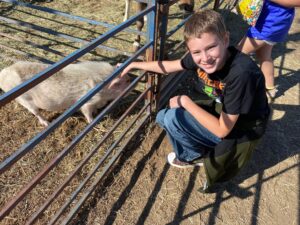
 now, Ethan is not a typical 13-year-old boy either. He has received two “Positive Office Referrals” for being great in class and helping his peers. Ethan is such a sweet young man, who is very loving toward all who know him. He is helpful and kind to his sister, Aurora Hadlock. They are really good friends. There is so much to be proud od when it comes to Ethan. Today is Ethan’s 13th birthday. Happy birthday Ethan!! Have a great day!! We love you!!
now, Ethan is not a typical 13-year-old boy either. He has received two “Positive Office Referrals” for being great in class and helping his peers. Ethan is such a sweet young man, who is very loving toward all who know him. He is helpful and kind to his sister, Aurora Hadlock. They are really good friends. There is so much to be proud od when it comes to Ethan. Today is Ethan’s 13th birthday. Happy birthday Ethan!! Have a great day!! We love you!!
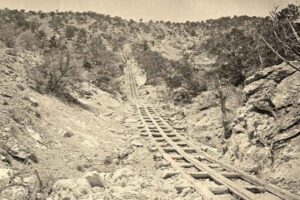 Gold mining was, without a doubt, a profitable business, but it wasn’t an easy business to be in, especially in the early days. The miners-turned-innovators had to figure out ways to speed work up in order to make a profit. Gold is a tricky metal to find and mine, as are most precious metals. One thing that was needed, especially in underground mining, was a way to get the ore out of the mine, and the tools and workers into the mine. It is a waste of time to have workers walking long distances into the mines., their tools are heavy, and carrying all that in makes for slow going…if the miners
Gold mining was, without a doubt, a profitable business, but it wasn’t an easy business to be in, especially in the early days. The miners-turned-innovators had to figure out ways to speed work up in order to make a profit. Gold is a tricky metal to find and mine, as are most precious metals. One thing that was needed, especially in underground mining, was a way to get the ore out of the mine, and the tools and workers into the mine. It is a waste of time to have workers walking long distances into the mines., their tools are heavy, and carrying all that in makes for slow going…if the miners 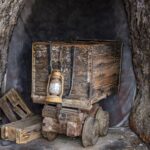 are walking anyway. A mine railway, also called mine railroad or sometimes pit railway, is a railway constructed to carry materials and workers in and out of a mine. Few people would remember, but the mix of heavy and bulky materials which had to be hauled into and out of mines gave rise to the first several generations of railways. The first rails, like this one, photographed in Illinois by Timothy O’Sullivan leading to a gold mine, was made of wooden rails. Eventually they added protective iron, steam locomotion by fixed engines and the earliest
are walking anyway. A mine railway, also called mine railroad or sometimes pit railway, is a railway constructed to carry materials and workers in and out of a mine. Few people would remember, but the mix of heavy and bulky materials which had to be hauled into and out of mines gave rise to the first several generations of railways. The first rails, like this one, photographed in Illinois by Timothy O’Sullivan leading to a gold mine, was made of wooden rails. Eventually they added protective iron, steam locomotion by fixed engines and the earliest 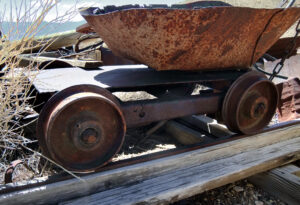 commercial steam locomotives. All these came about because of the mines.
commercial steam locomotives. All these came about because of the mines.
The old wooden rails worked very well. Gold carts, or ore cars, were moved up and down the railway using a pulley. The original design of these carts was used in Colorado mines in the late 1800s. The system even had a 360° operating turntable, which allowed the car to dump in any direction. The wheels were exclusive, with a curved five spoke cast iron design. Running the ore carts along the railway wasn’t easy either. There may have been a steam engine to work the pulley later on, but at first, it was all human muscle, and it wasn’t easy.
 It’s hard to believe that my mother-in-law, Joann Schulenberg has been in Heaven for four years now. Her passing took time. Alzheimer’s Disease is a slow killer, in comparison to other diseases. That doesn’t make Alzheimer’s Disease any less devastating, and in fact, it just might be more devastating, because before the end comes, the patient has already lost their memory. Still, if you look for the good in the situation, you might just find that while they may not remember many new things, including who you are, now that you are grown up, they have many old memories that can really enrich your life…if you are willing to listen to their stories.
It’s hard to believe that my mother-in-law, Joann Schulenberg has been in Heaven for four years now. Her passing took time. Alzheimer’s Disease is a slow killer, in comparison to other diseases. That doesn’t make Alzheimer’s Disease any less devastating, and in fact, it just might be more devastating, because before the end comes, the patient has already lost their memory. Still, if you look for the good in the situation, you might just find that while they may not remember many new things, including who you are, now that you are grown up, they have many old memories that can really enrich your life…if you are willing to listen to their stories.
My mother-in-law often wasn’t sure of our names when we came to visit her, but by the look on her face and the alertness of her posture, you knew that she knew that you belonged to her. Many people place a lot of emphasis on the patient knowing their family’s names, but that is just setting yourself up for sadness. And you miss the recognition that comes without the name. My mother-in-law did so much for so many people…from knitting, to crocheting, to sewing, to cooking, my mother-in-law did a lot for the people around her. She lived a good long life, much of it raising the vegetables and meat for the family. She saw eras of time that people today can’t understand. With depression and recession, boom and bust, mining and agriculture, she had a diverse viewpoint, and that made her, unlike the rest of the people around her knowledgeable in different ways of life.
As her disease progressed, my mother-in-law, lost her recent memories, but she retained the old memories, and she passed them along to her family…often in the funniest ways. One minute you might find yourself telling her what time to get on the school bus, the next you think you have her all figured out when she tells you that they are having dinner at your house…like you aren’t you. When you try to play along, and ask her what the 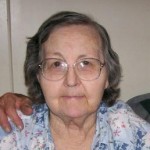 “imaginary you” will be cooking, suddenly she was back and making you feel ridiculous, by saying, “I don’t know, what are you cooking?” I know people consider Alzheimer’s Disease to be a tragic, devastating disease, and I suppose it is, but when people think about how devastating Alzheimer’s is, they are thinking of themselves…what they are missing out on, not thinking about the patient…who won’t remember grief or loss, who gets to become younger in their mind, and who ends up without a care in the world. Attitude is a big part of dealing with Alzheimer’s Disease, and I don’t mean the attitude of the patient, I mean the attitude of the family. It makes all the difference in the world. Four years ago, my mother-in-law left us for Heaven, where her mind is clear again. I am truly happy for her, even though we miss her very much.
“imaginary you” will be cooking, suddenly she was back and making you feel ridiculous, by saying, “I don’t know, what are you cooking?” I know people consider Alzheimer’s Disease to be a tragic, devastating disease, and I suppose it is, but when people think about how devastating Alzheimer’s is, they are thinking of themselves…what they are missing out on, not thinking about the patient…who won’t remember grief or loss, who gets to become younger in their mind, and who ends up without a care in the world. Attitude is a big part of dealing with Alzheimer’s Disease, and I don’t mean the attitude of the patient, I mean the attitude of the family. It makes all the difference in the world. Four years ago, my mother-in-law left us for Heaven, where her mind is clear again. I am truly happy for her, even though we miss her very much.
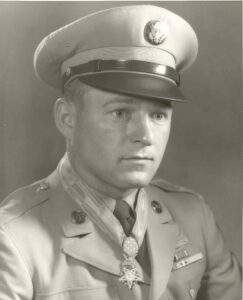 What makes a Medal of Honor winner? I don’t mean what act actually earns them the medal, but rather what causes them to get to that point and beyond. The Medal of Honor is the United States government’s highest and most prestigious military decoration that may be awarded to recognize American soldiers, sailors, marines, airmen, Space Force guardians, and coast guardsmen who have distinguished themselves by acts of valor…or great courage in the face of danger, especially in battle. I seriously doubt if the winner gave any thought to what he had to do to win the medal…there is just no time, and people don’t perform heroic acts just for the medal. It’s bigger than that.
What makes a Medal of Honor winner? I don’t mean what act actually earns them the medal, but rather what causes them to get to that point and beyond. The Medal of Honor is the United States government’s highest and most prestigious military decoration that may be awarded to recognize American soldiers, sailors, marines, airmen, Space Force guardians, and coast guardsmen who have distinguished themselves by acts of valor…or great courage in the face of danger, especially in battle. I seriously doubt if the winner gave any thought to what he had to do to win the medal…there is just no time, and people don’t perform heroic acts just for the medal. It’s bigger than that.
One man, Corporal Ronald Rosser, earned his Medal of Honor while serving in the 38th Regiment of the 2nd Infantry Division during the Korean War. Rosser enlisted in Army at the age of 17 and served from 1946 until 1949. His tour was finished, and he went home, but then his younger brother was killed in Korea in February of 1951. Rosser was devastated, but instead of wallowing in grief, he chose to honor his brother. Rosser re-enlisted to “finish his [brother’s] tour” of duty. Revenge was the only thing he could do for his brother now, and Rosser wanted revenge. In January of 1952, Rosser was a part of the regiment’s L Company. L Company was dispatched to capture an enemy-occupied hill. The battle there was fierce and enemy resistance caused heavy casualties. L Company was reduced to just 35 men from the initial 170 sent out, but they were ordered to make one more  attempt to take the hill. Orders are orders, and as I said, the men didn’t really have time to think about how they could prove their courage. Rosser rallied the remaining men and charged the hill. Enemy fire continued to be heavy, but Rosser attacked the enemy position three times, killing 13 enemy soldiers, and although wounded himself, carried several men to safety. It truly was a courageous act, and one worthy of the Medal of Honor, but not one that Rosser had planned in any way. He just knew that he needed to save as many lives as he could, because he couldn’t live with himself if he didn’t. On June 27, 1952, Rosser was awarded the Medal of Honor by President Harry Truman at the White House for his heroism. On September 20, 1966, another of Rosser’s brothers, PFC Gary Edward Rosser, USMC, was killed in action, this time in the Vietnam War. Rosser requested a combat assignment in Vietnam but was rejected and subsequently retired from the army soon after. Rosser married Sandra Kay (nee Smith) Rosser who died November 28, 2014. He was the father of Pamela (nee Rosser) Lovell. Rosser died on August 26, 2020, in Bumpus Mills, Tennessee at the age of 90.
attempt to take the hill. Orders are orders, and as I said, the men didn’t really have time to think about how they could prove their courage. Rosser rallied the remaining men and charged the hill. Enemy fire continued to be heavy, but Rosser attacked the enemy position three times, killing 13 enemy soldiers, and although wounded himself, carried several men to safety. It truly was a courageous act, and one worthy of the Medal of Honor, but not one that Rosser had planned in any way. He just knew that he needed to save as many lives as he could, because he couldn’t live with himself if he didn’t. On June 27, 1952, Rosser was awarded the Medal of Honor by President Harry Truman at the White House for his heroism. On September 20, 1966, another of Rosser’s brothers, PFC Gary Edward Rosser, USMC, was killed in action, this time in the Vietnam War. Rosser requested a combat assignment in Vietnam but was rejected and subsequently retired from the army soon after. Rosser married Sandra Kay (nee Smith) Rosser who died November 28, 2014. He was the father of Pamela (nee Rosser) Lovell. Rosser died on August 26, 2020, in Bumpus Mills, Tennessee at the age of 90.

 My nephew, Allen Beach has had a very busy year. Following his wife, Gaby’s graduation from nursing school, they decided to buy a house closer to Wyoming Medical Center, where they both now work. They quickly found the perfect house and moved in last March. They quickly set about getting settled and making the house their own. They’ve removed some trees in the back yard that we’re old and growing into power lines. They hope to build a garage in the back yard sometime in the near future, but for now they will most likely settle for a taller privacy fence.
My nephew, Allen Beach has had a very busy year. Following his wife, Gaby’s graduation from nursing school, they decided to buy a house closer to Wyoming Medical Center, where they both now work. They quickly found the perfect house and moved in last March. They quickly set about getting settled and making the house their own. They’ve removed some trees in the back yard that we’re old and growing into power lines. They hope to build a garage in the back yard sometime in the near future, but for now they will most likely settle for a taller privacy fence.
Now that both of them have graduated from college, they have time for all the fun stuff. And speaking of fun stuff…Allen bought an old truck he’s been working on. It seems like most men have a dream of fixing up an old car or truck, and Allen is no different. That’s one way to have fun, but Disney World is another, so Allen and Gaby are planning a trip there in April. I’m sure that after a cold winter, a trip to sunny Florida would be really nice. Maybe they could pack me in their suitcase…if I promise to stay out of the way. No, probably not. Allen and Gaby also have two wonderful dogs, named Oly and Jasper. The dogs are truly their babies. They love playing with the dogs and the dogs love them.
They love to travel, but that has been curtailed these days. That is partly why this trip to Florida is such a big deal. After a wile of being locked down, it’s time to live a little. Allen and Gaby have traveled to many places all 
 over the world, so being locked down is especially tough. Traveling to places like Bali or Japan, are more their style, but they are just places, and the real thing is being together. Allen and Gaby are best friends and have been since they first met, while they were both serving this great nation in the Navy. They both became corpsmen and knew that medicine would be their chosen field. While Gaby chose nursing, Allen chose hospital administration. Both of them are very good at their jobs, and Wyoming Medical Center is very blessed by their service. Today is Allen’s birthday. Happy birthday Allen!! Have a great day!! We love you!!
over the world, so being locked down is especially tough. Traveling to places like Bali or Japan, are more their style, but they are just places, and the real thing is being together. Allen and Gaby are best friends and have been since they first met, while they were both serving this great nation in the Navy. They both became corpsmen and knew that medicine would be their chosen field. While Gaby chose nursing, Allen chose hospital administration. Both of them are very good at their jobs, and Wyoming Medical Center is very blessed by their service. Today is Allen’s birthday. Happy birthday Allen!! Have a great day!! We love you!!

 On this, my mother, Collene Spencer’s birthday in Heaven, I am reminded of really, how wise she was, even though my sisters and I did not really realize just how wise she was. They say, “Laughter is the best medicine,” and indeed, the Bible says, “Laughter doeth good like a medicine.” My mother really tried to live that out. She would always remind us to “Keep of the Sunny side of life,” meaning to laugh at hardship and adversity, because you can get through almost anything if you can laugh at adversity. Sometimes, my sisters and I felt like laughter was far too simplistic for what we needed at any given time, but Mom was always full of laughter and song, and her life was really far smoother than ours ever were. For her life was simple. Follow God’s leading, and you will be just fine…and she always was.
On this, my mother, Collene Spencer’s birthday in Heaven, I am reminded of really, how wise she was, even though my sisters and I did not really realize just how wise she was. They say, “Laughter is the best medicine,” and indeed, the Bible says, “Laughter doeth good like a medicine.” My mother really tried to live that out. She would always remind us to “Keep of the Sunny side of life,” meaning to laugh at hardship and adversity, because you can get through almost anything if you can laugh at adversity. Sometimes, my sisters and I felt like laughter was far too simplistic for what we needed at any given time, but Mom was always full of laughter and song, and her life was really far smoother than ours ever were. For her life was simple. Follow God’s leading, and you will be just fine…and she always was.
Mom was first and foremost, a woman of God. If you were in her vicinity, you were going to hear about her Savior at some point in the conversation. Sometimes, when she would begin to talk, we…or at least I would begin to cringe, because I thought people would think she was crazy. I was always of the opinion that if God wanted a person saved, He would make it happen somehow, and it was not my job to help. Oh…how wrong that opinion is. The Bible talks about sending the “laborers” out to save the sinners, and I don’t know who I thought that was, but somehow, I didn’t think it was me…or my mom. Still, if not us, then who. A laborer had to be a human, of course, but did it have to be my mom…at a time in my life (the teenaged years), when her speaking out was going to embarrass me. Well, it did, and I had to deal with it, because she had a calling, and she loved her Lord so much that she was going to do what He asked. She saw it as her duty…and of course, it was.
Now, I am very proud of my mom’s accomplishments, in her Labors for the Lord, because when she went home to Heaven on February 22, 2015, I saw, at her funeral, a large crowd of people who knew and loved her, and many who felt like they owed their salvation to her work for the Lord. How could that be? She wasn’t a preacher, evangelist, missionary, or teacher. She was a laborer…just a laborer!! And yet, I know that when it 
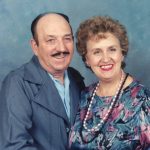 came time to give her the crowns for leading others to the Lord…they were many. She would talk to anyone, anywhere, because she was a laborer for the Lord. Looking back, I am quite proud of my mom, her legacy, and her “almost embarrassing way” of laboring for the Lord, because now I can see that she was far wiser than I ever was. Today would have been my mom’s 86th birthday. Happy birthday in Heaven, Mom. Have a wonderful celebration. We love and miss you and Dad very much.
came time to give her the crowns for leading others to the Lord…they were many. She would talk to anyone, anywhere, because she was a laborer for the Lord. Looking back, I am quite proud of my mom, her legacy, and her “almost embarrassing way” of laboring for the Lord, because now I can see that she was far wiser than I ever was. Today would have been my mom’s 86th birthday. Happy birthday in Heaven, Mom. Have a wonderful celebration. We love and miss you and Dad very much.

